Schererville, IN: St. Michael Parish
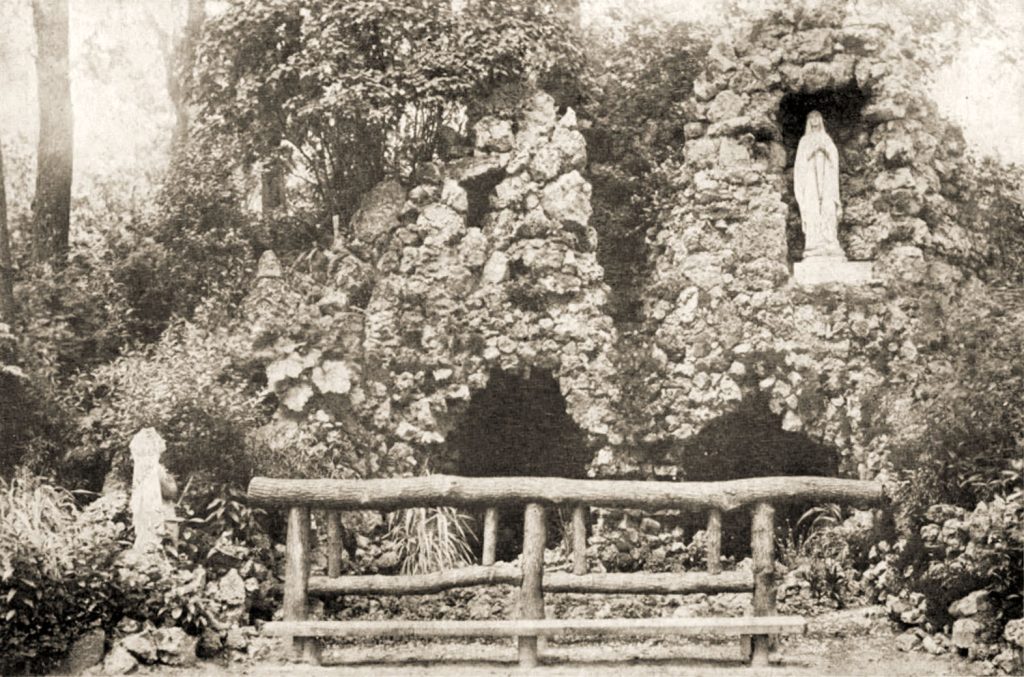
Saint Michael Parish was established in Schererville, Indiana in 1873 by German Catholic settlers, and the first church building was built in 1874. Another church was constructed in the 1920s for the growing population, and the current church was built in 1999.
The Lourdes Grotto at St. Michael was built in 1906 by Edward J. Koenig, according to a newspaper article:

Immaculate Conception, one of the great holidays in the Catholic church, will be celebrated with unusual ceremony in the little town of Schererville tomorrow. In addition to the religious observation of the day the dedication of a Lourdes grotto will take place and no pains and labor have been spared to make the grotto itself an ideal place. By his untiring work the Rev. William Berg, pastor of St. Michael’s congregation has gained a reputation as a landscape gardner. the beautifully laid out cemetery and adjoining park and school grounds being responsible for this. In addition there is now the Lourdes grotto, a dream that the clergyman has cherished for many years, and of which he hardly dared speak to his parishioners in the beginning, is completed.
The grotto is situated west of St. Michaels church on an elevation, is an imitation of the famous Lourdes grotto of France, and has two niches in which two statues will be placed tomorrow, one of “Our Lady,” and a second one of “Bernadette.” Around the grotto lie rough boulders, the grotto, also being built of them. An artificial waterfall flows through it, passes then through many windings and finally empties into a lagoon.
At some distance west from the grotto is a beautiful summer house, also standing on an elevation. To reach it two bridges must be crossed, erected over winding streams of water. The house and bridges are built of tree branches. Rustic seats and tables built in a similar manner are also in the park. The place where the summer house has been erected is in a little park adjoining the cemetery on the south side. The paths in the park will be graveled next spring, when a few more finishing touches will be added. The work is artistic throughout and although the place has always been a beautiful nook, it is now an ideal spot, especially in the summer time.
The work has been done by Mr. Koening, a landscape gardner from Germany, who came over purposely to do such work. Mr. Koening is a nephew of Father Koening of Merrillville and was in this country on a former occasion when he did similar work. Many visitors are expected to be present tomorrow for the dedication and preparations have been made for their accommodations. The history of the original Lourdes is an interesting one….
The Times (Munster, IN), December 7, 1906
The above article mentions that the grotto had a waterfall which flowed “through many windings” into a lagoon, like the concrete pond in the below image. The caption on Koenig’s brochure page, shown below, mentions that the waterfall was in the rear of the grotto on a mountain, not seen in the photos. It also identifies that the grotto was about 30 feet wide and 17 feet high.
The article also mentions a number of rustic bentwood structures, which Koenig specialized in, including a summer house (likely a gazebo), bridges crossing streams of water (perhaps over the “many windings” toward the lagoon?), and bentwood seats and tables.
Koenig must have returned to build another rock structure, a St. Anthony’s shrine (shown two images down), before 1916, as it is identified in his c.1917 brochure:
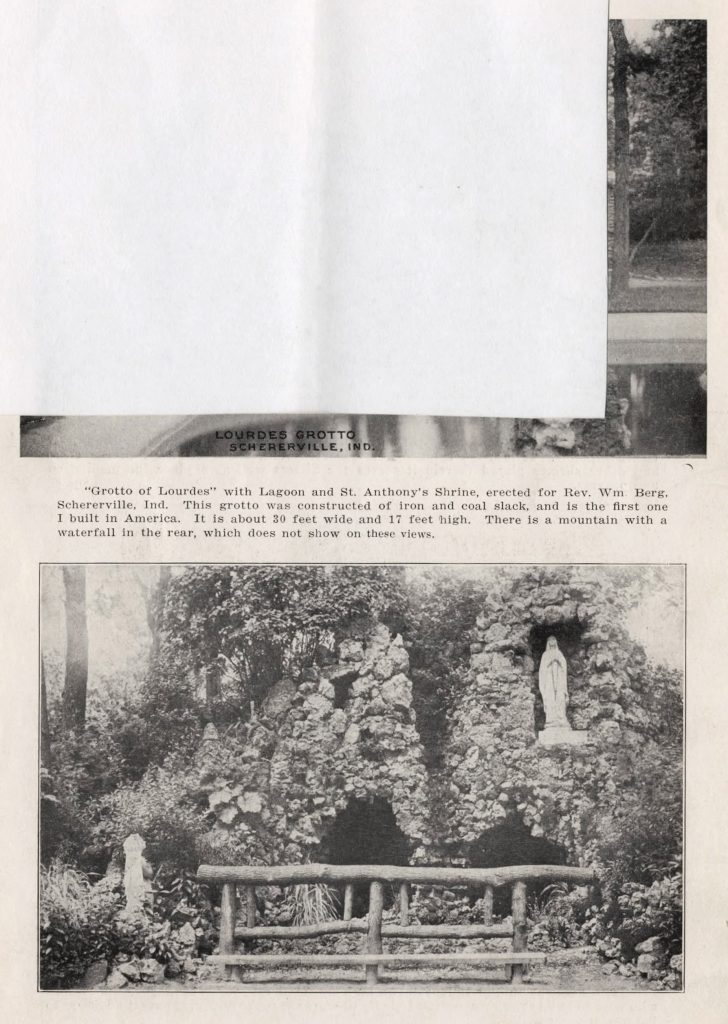
The caption in Koenig’s brochure identifies this as the first Lourdes grotto he built in America. He had only arrived in the US on June 30, 1906, staying with his brother (not nephew, as erroneously identified in the above article), Fr. Fred F. Koenig at Sts. Peter and Paul Church in nearby Merrillville, and he must have started building this grotto within a few months of his arrival.
In the 1920s, Brother Fridolin Iten built a Mount Calvary and Stations of the Cross at St. Michael Parish in Schererville, Indiana, according to a 1927 article. And a Grotto of Gethsemane and a Resurrection Grotto were built on either side of Mount Calvary as well, likely by Brother Fridolin in 1928 or 1929. Brother Fridolen’s work in Schererville still exists; those grottos, and perhaps the St. Anthony’s shrine too, were sealed up for preservation for ten years during the 1970s, but were restored in 1980.
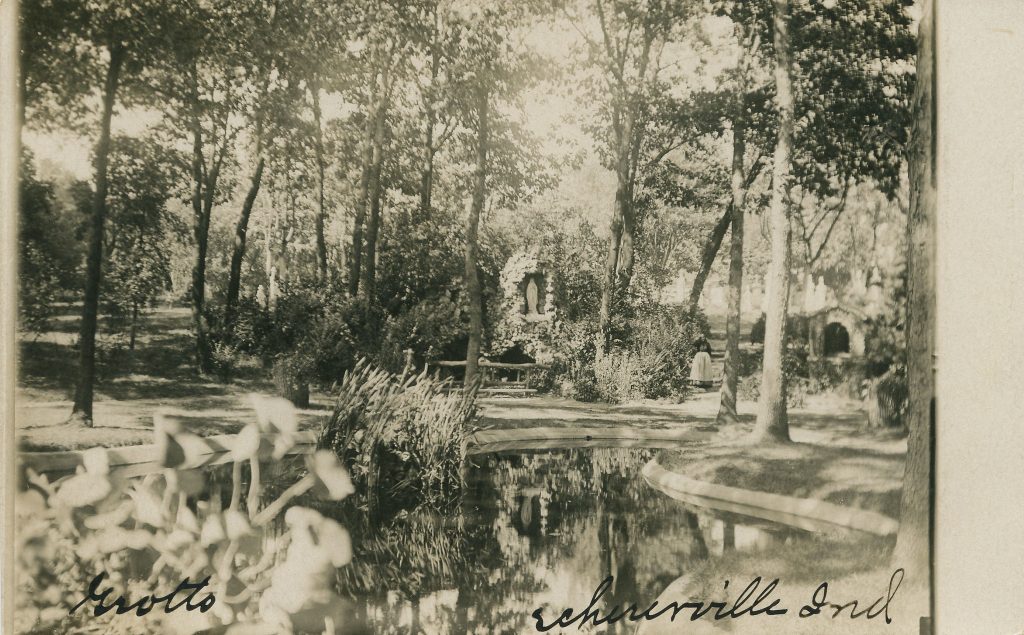
The Lourdes grotto at St. Michael in Schererville still stands and has been been beautifully maintained for nearly 120 years, providing St. Michael parishioners and Catholic school students with a lovely, peaceful place of faith.
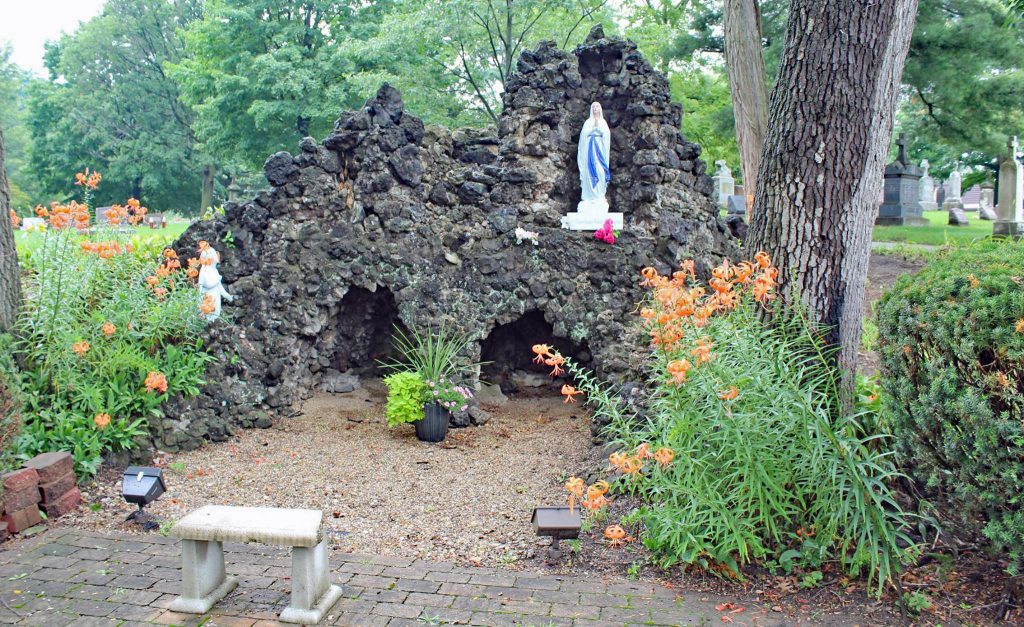


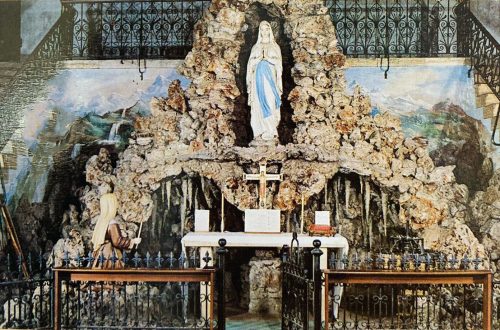
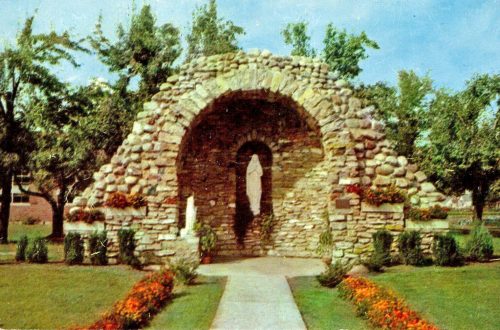
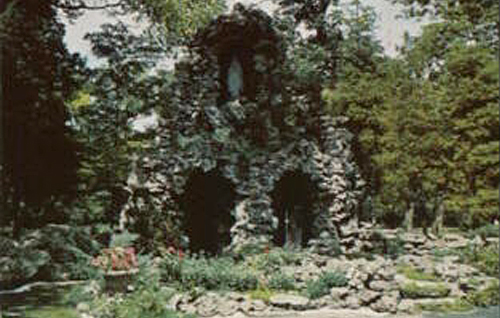
One Comment
JOHN L SCHERER
Thank you, John Scherer from Massachusetts